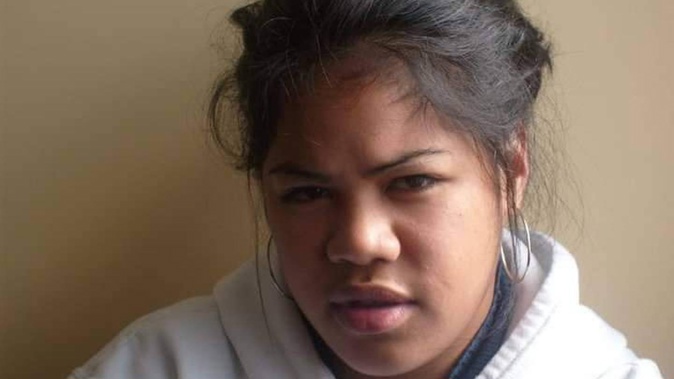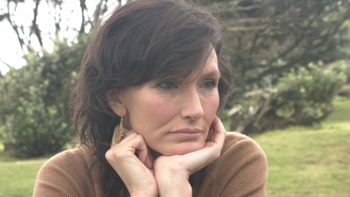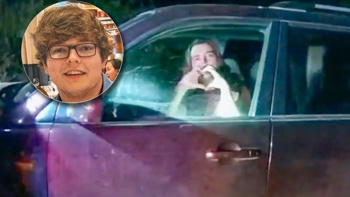

WARNING: This story deals with severe mental disorder and suicide, and may be upsetting.
A young Māori woman who took her own life soon after telling a mental health nurse she was “tired of all this” and wanted to die was let down by “systemic failings” at the secure unit where she had been largely confined for six years.
Esther Grace Osborne had been institutionalised in state care for a decade when she died three days after harming herself in a de-escalation room at the Tāwhirimātea inpatient unit at Porirua in July 2016.
It was the same unit where autistic man Ashley Peacock was kept largely in seclusion for more than five years.
Now, almost eight years later, Coroner Janet Anderson has found Osborne’s death was self-inflicted and “systemic failings affecting the operations of the de-escalation unit contributed to the sequence of events” on July 1 that resulted in the 27-year-old not receiving the level of care and supervision she should have.
Anderson has made a series of recommendations to prevent similar deaths, including improving communication between mental health providers and whānau and reviewing the extent to which cultural support was available to Māori psychiatric patients at Te Whatu Ora Capital, Coast and Hutt Valley.
Osborne’s mother, Tasi Huirama, welcomed the findings, saying the system needed to change for Māori.
What happened on the day Osborne self-harmed
Osborne, also known by her family as Ziporah Huirama, died in hospital on July 4 after harming herself in a de-escalation room three days earlier, despite policy at the time stating that she should be monitored continuously.
She had been on an escorted walk with a junior nurse on hospital grounds when she said she wanted to die and talked about different ways she might take her life.
When the pair returned to the unit, a lack of communication between staff meant Osborne was given the items she said she would use and, within 20 minutes, she was found unresponsive.
/cloudfront-ap-southeast-2.images.arcpublishing.com/nzme/QOJUHZKLOTSQ7MNWOSWAUHH2OY.jpg) The Tāwhirimātea unit at Ratonga Rua Ō Porirua, where Esther Osborne lived for a decade. Photo / Mark Mitchell
The Tāwhirimātea unit at Ratonga Rua Ō Porirua, where Esther Osborne lived for a decade. Photo / Mark Mitchell
The coroner found Osborne died by suicide and that her “loss of hope” at ever leaving institutional care was a contributing factor. The method of suicide cannot be reported.
Osborne suffered from schizoaffective disorder – a combination of schizophrenia and bipolar disorder – exacerbated by substance abuse and borderline personality disorder. She had been in mental health care or prison for most of her teenage life and all of her adult life.
On July 1, 2016, she became upset after a phone call with a family member. Although she was seen on multiple occasions by various staff between the time she arrived back at the de-escalation unit and when she was found unresponsive, the coroner found she should have been continuously supervised because of her earlier threat to harm herself.
However, the junior nurse, who was a casual worker at Tāwhirimātea, described the culture as “inflexible” and indicated that senior staff did not seem to welcome suggestions or concerns.
She said there was no clear handover process on the unit and she wasn’t clear to whom she should hand over after she and Osborne returned from the walk.
The coroner’s report says: “Nurse A stated that no one asked her for a verbal handover. She advised that there was a period of only 20 minutes from when she arrived back at the unit with Esther’s medication and when the incident occurred.
“She was mainly in the office writing notes during this time. She said she had never completed an incident report before and was finding it difficult.”
Coroner Anderson noted Osborne had previously used and threatened to use a variety of methods to harm herself, which meant it was not possible to conclude whether she would still be alive if the relevant policies had been complied with.
However, it was clear from the evidence that Osborne did not receive the required level of care that day.
Loss of hope and unheard complaints
Osborne was subject to a compulsory treatment order under the Mental Health Act. Repeated attempts by her and her family to have her released into the community were unsuccessful.
“I have formed the view that Esther’s loss of hope was likely to have been one factor in her suicide,” the coroner said.
“Esther was not able to see a way out of her situation and at times she despaired about her chances of returning to live in the community.
“I consider that the very prolonged period of her compulsory detention, including lengthy episodes in the de-escalation area, and her feelings of being disconnected from her whānau, were factors that likely contributed to her feelings of hopelessness in this regard.”
/cloudfront-ap-southeast-2.images.arcpublishing.com/nzme/CXTRSFKAZJED53HVGCMOGNU35Q.jpg) Tasi Huirama, centre, holds a pair of Osborne's shoes alongside daughters Abigail, left, who holds a photo of her late sister, and Sharon. Osborne was one of seven sisters.
Tasi Huirama, centre, holds a pair of Osborne's shoes alongside daughters Abigail, left, who holds a photo of her late sister, and Sharon. Osborne was one of seven sisters.
Tasi Huirama told the inquest that whānau were not consulted about any of her daughter’s treatment. They could not visit her for the first six months of her detention and only once every three months after that.
One sister described having to sleep on the roadside in Wellington when visiting. Visits were cancelled at the last minute or cut short.
“The whānau could not understand or accept why certain actions were taken against Esther, particularly where these steps were perceived to be punitive or unfair,” the coroner said.
“They considered that formal complaints they made about Esther’s care were ignored.”
Te Whatu Ora could not find evidence of the family’s complaints, but the coroner found Huirama was making written complaints as far back as 2012 about her daughter’s treatment and the family’s access to her.
Among Huirama’s concerns was that Osborne was being isolated from her whānau and culture, often in solitary confinement, over-medicated and sedated, and at risk as a teenage girl in a male-dominated environment. Huirama said that, in 2009, her daughter was restrained and “strip-searched” and in 2012 she was “inappropriately touched” by a male nurse while being taken to seclusion.
She also raised concerns that Osborne’s treatment plan took priority over family visits and there was no written communication about the treatment plan.
At the inquest, her parents described Osborne as being good at sports and maths and said she wanted to study to become an accountant and run her own business.
Te Whatu Ora said Osborne’s behaviour was affected by substance abuse and interaction with her family.
/cloudfront-ap-southeast-2.images.arcpublishing.com/nzme/MOAU5322AVEPLF3ECNCJUFYEW4.JPG)
Coroner Anderson said the difference between the perceptions of the clinical team and Osborne’s whānau was “stark and disturbing”.
“The causes of suicide are very complex and multifactorial. Esther’s emotions fluctuated dramatically over short periods of time, for a variety of reasons.
“Based on the evidence available to me, I accept the view of Esther’s whānau that she lost hope and that she had difficulty seeing a pathway out of the inpatient unit where she was detained.”
System needs to change for Māori
Osborne’s whānau made a claim to the Waitangi Tribunal over the “savage injustice” they said led to her death.
Huirama said Osborne didn’t want to die and tried hard not to be beaten down by the system.
She said the inquest findings vindicated the family and she hoped Te Whatu Ora would follow the coroner’s recommendations about engaging with whānau.
In her findings, Anderson said Māori were 4.1 times more likely to be subject to indefinite inpatient treatment orders. Māori made up about 17 per cent of New Zealand’s population in 2022, yet they accounted for 28.4 per cent of all mental health service users.
“This data highlights the importance of ensuring that mental health care is delivered in a culturally informed and appropriate manner.
“There is minimal evidence available to me to suggest that this was occurring in a co-ordinated, consistent and comprehensive way for Esther during the last months of her life.”
/cloudfront-ap-southeast-2.images.arcpublishing.com/nzme/ZGKRETCHMNOZBHXTWDLMTLOOSU.jpg) Esther Osborne piled on weight from the medication she was given during the 10 years she lived at Tāwhirimātea.
Esther Osborne piled on weight from the medication she was given during the 10 years she lived at Tāwhirimātea.
She said Osborne’s life was tragically short and her time in state care was prolonged and difficult.
“Her liberty and her personal autonomy were restricted in many different ways, and she was subjected to compulsory mental health treatment for over a decade.
“I acknowledge the profound and distressing impact of these events on Esther and her family members.
“Stories like Esther’s highlight the importance of identifying and implementing more humane ways to respond to individuals who experience severe mental health challenges.”
That included continuing work to reduce or eliminate compulsory detention and providing supportive, community-based, tikanga-informed treatment options “to the greatest extent possible”.
The coroner acknowledged the changes Te Whatu Ora Capital, Coast and Hutt Valley had already made but recommended it engage with Osborne’s family over maintaining effective communication, consider the extent of travel and accommodation assistance for families who live far away, and review the extent to which cultural support and hauora Māori treatment options were made available and communicated.
She also recommended continuing to support “zero inclusion” approaches.
Paul Oxnam, executive clinical director of the Mental Health, Addiction and Intellectual Disability Service (MHAIDS) for Te Whatu Ora Capital, Coast, Hutt Valley and Wairarapa, accepted the coroner’s findings and extended the service’s condolences to Osborne’s whānau “for their tragic loss, and for the distress and pōuri [sadness] they have experienced”.
The findings aligned with an MHAIDS review in 2017, which resulted in a range of improvements, including updating key policies and procedures in place at the time of Osborne’s death, he said.
This included strengthening culturally informed care, such as having cultural workers on clinical teams to support clients and connect with whānau, incorporating Māori models of care, and developing a new model of care with Regional Rehabilitation Service staff and clients.
“Work will now begin to consider how best to give effect to all of the coroner’s recommendations. However, as these have only just been finalised, it is too soon to confirm timing for this to be completed.”
SUICIDE AND DEPRESSION
Where to get help:
• Lifeline: 0800 543 354 (available 24/7)
• Suicide Crisis Helpline: 0508 828 865 (0508 TAUTOKO (available 24/7)
• Youth services: (06) 3555 906
• Youthline: 0800 376 633
• What's Up: 0800 942 8787 (11am to11pm)
• Depression helpline: 0800 111 757 (available 24/7)
• Rainbow Youth: (09) 376 4155
• Helpline: 1737
If it is an emergency and you feel like you or someone else is at risk, call 111
Natalie Akoorie is a senior reporter based in Waikato, covering crime and justice nationally. Natalie first joined the Herald in 2011 and has been a journalist in New Zealand and overseas for 28 years, more recently covering health, social issues, local government and the regions.

Take your Radio, Podcasts and Music with you









